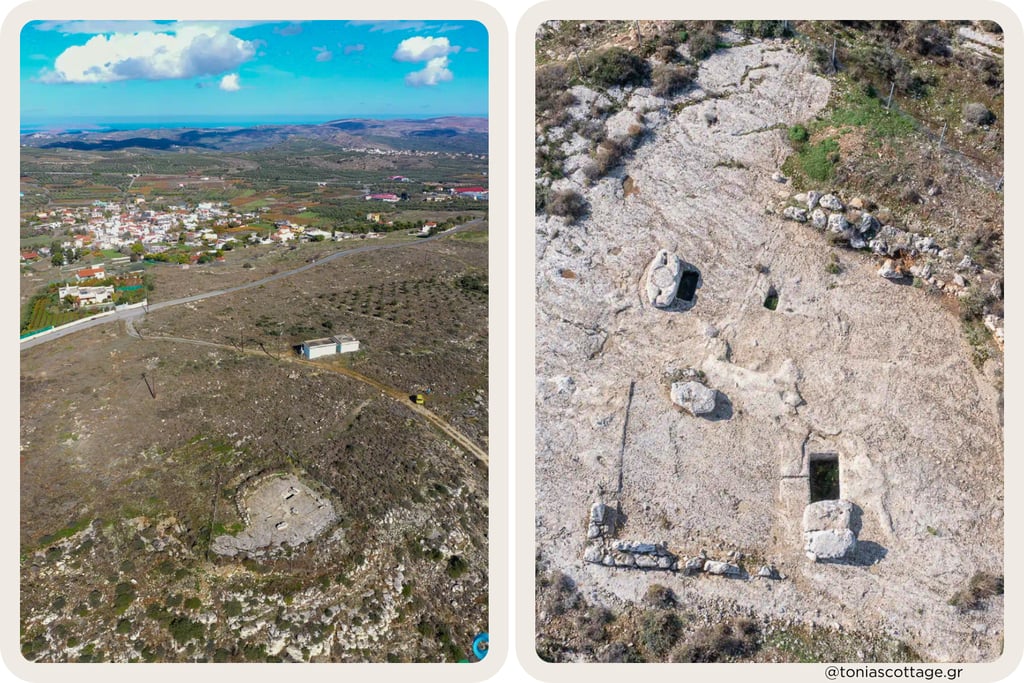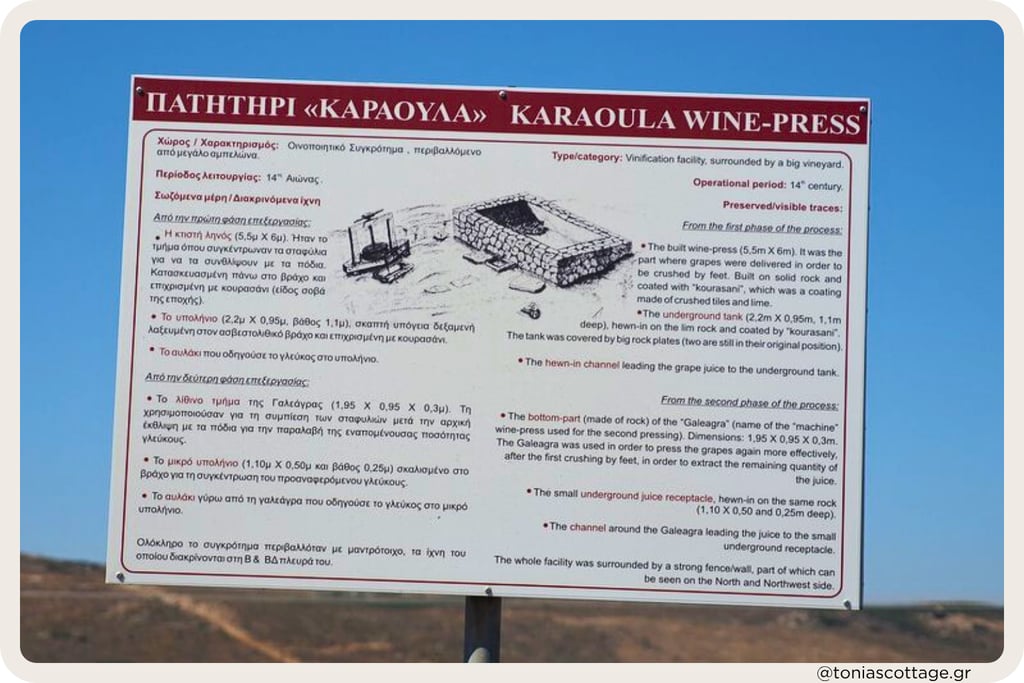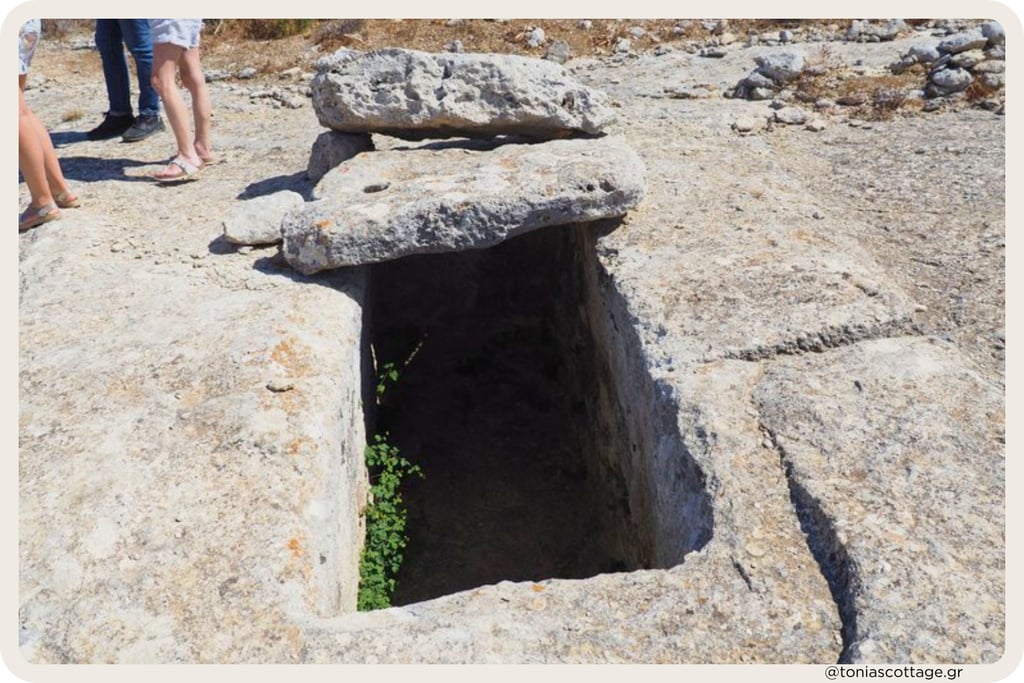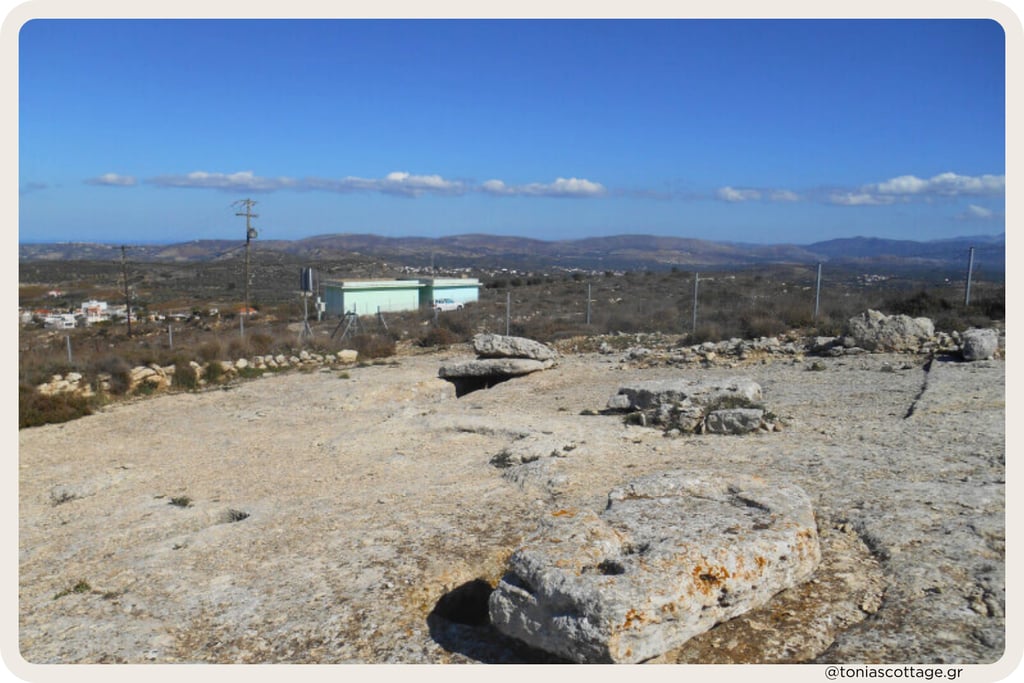Karaoula: 14th century wine press in Crete
LOCAL GUIDECRETE UNCOVEREDOUTDOOR ACTIVITIES
Author: Tonia
3 min read
Where ancient winemaking meets timeless Cretan life
Just outside the village of Alagni, you’ll find the Karaoula wine press — a remarkable piece of Crete’s winemaking history that dates back to the 14th century. Perched on a hill at 520 meters, it offers breathtaking views of the Alagni plateau and the vineyards below. The name Karaoula comes from the Greek word κάραουλι, meaning “to keep watch,” which perfectly fits this spot overlooking the valley and the vines that once produced the famous Alagnian wine, loved since Venetian times.
Visiting Karaoula and Alagni
From the Karaoula wine press, you can enjoy wide, open views of Alagni, its vineyards, and the hills stretching into the distance. You can still see the treading floor, the underground vats, and the base of the old press — all reminders of how wine was once made by hand and heart.
Today, Alagni village continues this tradition proudly. Many families still make their own wine and olive oil, passing down the same knowledge and passion through generations.
After exploring the village, you can visit nearby wineries, like Lyrarakis Winery, to taste some of Crete’s finest wines and experience the flavors that have been nurtured here for centuries.
Tonia ❤️
*Images courtesy of GeoTour: Virtual Tours of Crete's Landscape & Eco-Tourism, www.geotour.gr.
Traditional winemaking at Karaoula
The Karaoula site shows how wine was once made — by hand, with skill and patience. Grapes were first crushed on a large stone treading floor carved directly into the limestone. This floor, about 5.5 by 6 meters wide, was coated with a special mix of crushed tiles and lime called κουρασάνι, which made it both strong and safe for workers pressing grapes with their feet. The grape juice (called “must”) then flowed through small channels into an underground tank made of the same material. Some of the original stone slabs covering this tank can still be seen today.
Next came the second step — pressing what was left: the grape skins, seeds, and stems. A special tool called a γαλέαγρα (galeagra) was used to squeeze out the last drops of juice. The stone base of this old press still exists at the site, showing just how carefully every part of the harvest was used.
History and heritage
Karaoula’s size and structure tell us it played an important role in the area’s wine production long before Venetian times. It’s one of the largest and best-preserved medieval wine presses in Crete. Thanks to support from Lyrarakis Winery and the local cultural association, the site has been restored and protected so visitors can experience this piece of Crete’s winemaking story up close.
Alagni itself has deep roots in wine and farming, going all the way back to the Minoan civilization. The village and its surroundings are dotted with old winepresses and olive mills — proof of how much life here has always revolved around the land. The fertile soil, gentle winds, and unique microclimate all come together to create wines full of character.








Address
Tonia’s Cottage
Alagni Village, 70300 Arkalochori
Crete Island, Greece
Contact details
(+30) 697 054 0969 (WhatsApp)
info@toniascottage.gr
https://linktr.ee/toniascottage
Made with ❤️
© 2024 Tonia's Cottage | All Rights Reserved
Airbnb | Booking.com | HomeToGo | Vrbo
Property Registration Number (AMA): 00002660089
